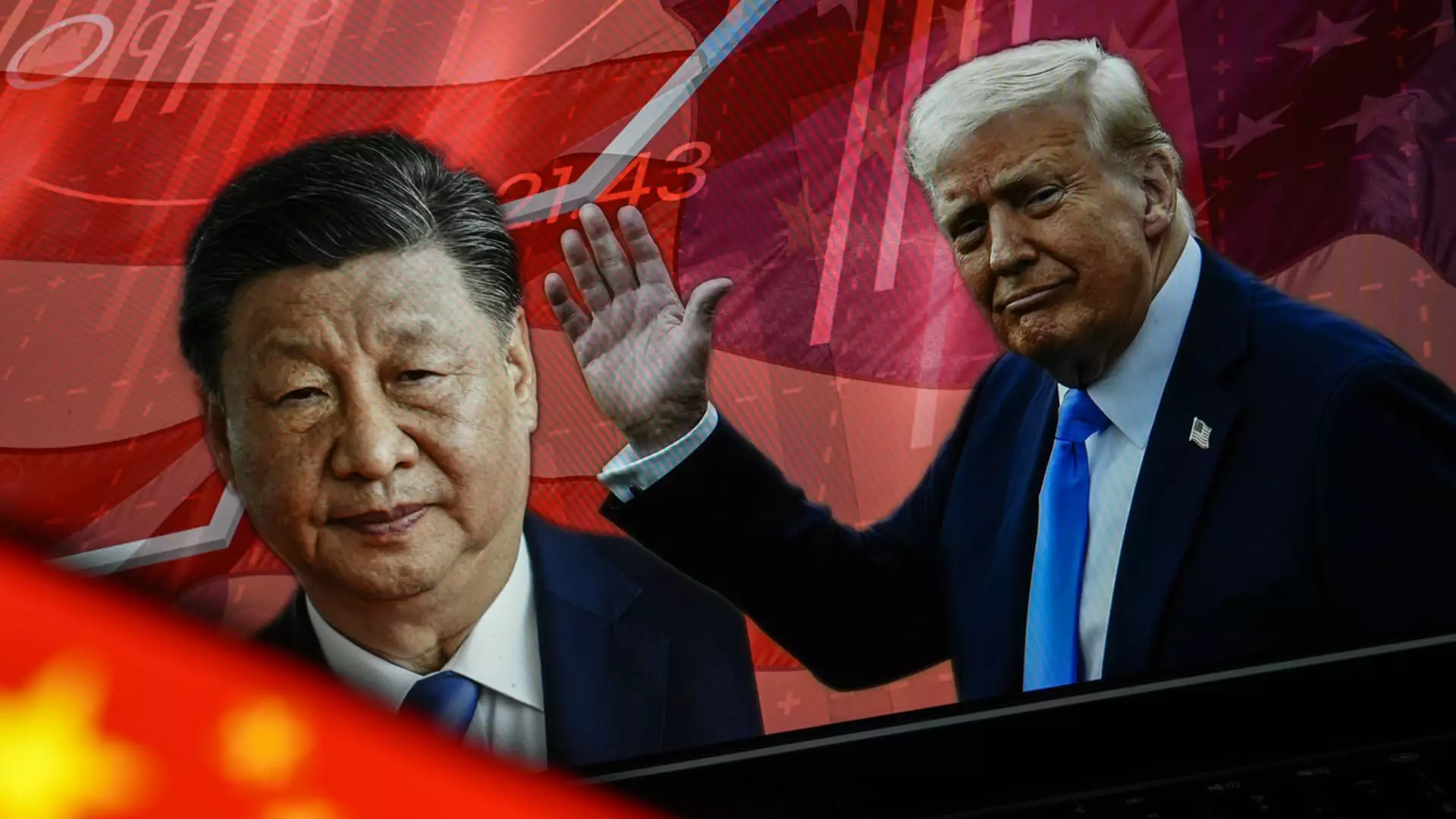In the escalating economic clash between the United States and China, the stakes have never been higher. China has recently declared its intention to move beyond retaliating with tariffs against the Trump administration’s aggressive trade policies. This strategic pivot marks a fundamental shift in tactics, ignoring the traditional model of tariff-for-tariff retaliation and instead focusing on a broader approach that could potentially incapacitate vital American sectors. The implications of this shift are profound, not only for U.S.-China relations but also for the global economy.
Recently, President Donald Trump escalated his tariffs on select Chinese goods to an astonishing 245% in response to trade violations. However, China has branded these numbers as nothing more than a “meaningless game,” dismissing the effectiveness of such tariffs. Judging by the swift response — including additional tariffs on U.S. imports of up to 125% — Beijing is sending unequivocal signals that it can inflict pain through measures beyond just higher tariffs.
In this juncture of international economics, it raises serious questions about the effectiveness of Trump’s tariff-heavy approach. When tariffs backfire, it’s common for nations to resort to other, potentially more damaging tactics, which is precisely what China is initiating.
Non-Tariff Measures: A New Arsenal of Pressure
The Chinese government’s evolving strategy demonstrates a keen understanding of where vulnerabilities lie in the American economy. By targeting sectors like international services, which encompass legal, consulting, and financial offerings, Beijing is cleverly outlining a new battlefield. U.S. firms have enjoyed a substantial trade surplus in these areas, and the Chinese government now appears ready to reassess the rules of engagement.
Recent moves include launching probes into major U.S. companies and scrutinizing firms that have benefited disproportionately from intellectual-property rights. The inclusion of prominent businesses like DuPont and Google in investigations highlights a significant risk — the unraveling of trust and cooperation in sectors that many believed to be insulated from political strife.
Further amplifying this tactic, China has ramped up export controls on rare-earth minerals, placing a chokehold on crucial resources required for advanced technologies and weapons systems. This bold maneuver not only retaliates against overreaching tariffs but assures that American companies must navigate newfound hurdles to access these essential materials.
High-Visibility Targets for Increased Pressure
The choice to scrutinize high-visibility sectors such as aviation, media, and education underlines China’s strategic acumen. By stoking public sentiment against American companies like Boeing and threatening the flow of Chinese students to U.S. educational institutions, China is profoundly affecting areas that resonate deeply with the American populace. The potential for reduced investment and engagement in these sectors could have long-lasting reputational effects that far exceed immediate financial damage.
For example, with travel being a massive component of U.S. services exports to China — especially for education-related expenses — tightening these avenues creates a ripple effect. The anticipated economic loss, reportedly amounting to $24 billion, is merely the tip of the iceberg. The erosion of trust in academic exchanges and technological collaboration could stifle innovation and talent development in both nations over the long run.
Furthermore, by advising its citizens against engagement with U.S. entertainment products and travel to the U.S., China is employing a soft power approach that could alter perceptions, breed further animosity, and fracture bilateral ties.
The Unwieldy Path to Negotiation
While the backdrop of these maneuvers is undeniably aggressive, it’s indicative of a desperate country reacting to perceived economic sabotage. Trump’s unilateral tariffs are labeled as ‘bullying’ by Chinese officials, and their reluctance to come to the negotiating table suggests a power struggle that risks spiraling out of control.
China’s emphasis on negotiating from an “equal footing” only complicates matters further. Any glimmers of potential cooperation seem to fade with each new administrative edict. The notion that the U.S. may need to appease China before reaching out for talks carries implicit threats of dire economic consequences if overtures are ignored.
As tensions rise and both nations entrench themselves behind barriers, there’s little hope of achieving a diplomatic resolution anytime soon. Analysts caution that without an urgent, course-correcting decision by either side, the calls for deeper decoupling from each other’s economies will only grow louder, leading to a future riddled with uncertainty and volatility that threatens global economic stability.
Rather than diffusing tensions, both countries risk igniting a protracted and damaging economic conflict that could shape geopolitical dynamics for decades to come. Consequently, America must urgently consider whether its current aggressive stance is worth the longer-term implications for its own economy, as China reasserts itself in a growingly competitive world landscape.


Leave a Reply